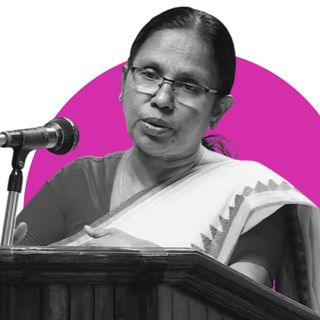An experimental bone growth drug, vosoritide, made waves in the medical community in September after results from phase 3 trials, published in The Lancet, showed it could increase growth in children with achondroplasia, the most common form of dwarfism. While it is most definitely not a cure, it has the capability to better the lives of children with dwarfism “physically, psychologically and functionally,” the U.K. lead on the trial, Dr. Melita Irving, told The Guardian.
People with achondroplasia grow to an adult height of approximately 4 feet, have shorter arms and legs as well as unique facial features. Because of their inhibited bone growth, they often live with co-morbidities, such as bone complications in the spine or skull, paralysis, acute and chronic pain, or sleep apnea. Caused by a change in one of the genes that determines bone growth, achondroplasia works by inhibiting this growth, which researchers say this drug can challenge. By releasing this genetic inhibition, the drug can make children with achondroplasia a few inches taller, although not of adult average height. Whether this drug can help people with dwarfism better deal with the medical complications that come with it remains to be seen.
In the end, it is this focus on height, and getting taller, that is alienating critics of the drug. Some are seeing it as an unwarranted method of ‘fixing’ or ‘curing’ something that doesn’t need to be fixed or cured. “This wasn’t intended as an attempt to deal with some of the co-occurring problems that people have with achondroplasia. It may turn out to be the case that it does some of those things, but that wasn’t the original intent,” disability rights activist Joe Stramondo, who has another kind of dwarfism, told The Guardian, adding he believes this drug was designed to simply ‘normalize’ dwarf bodies for the rest of society.
Irving, however, disagrees, and stresses making people achieve average height is not the main intention of the drug. “It’s improving health status, improving the ability to do normal things that we do every day, and how do we know if that is being achieved? We have to measure something with scientific rigour, so measuring height as a proxy for bone growth and responding to the drug is what we’ve done,” she says. “The emphasis has been on height in terms of an endpoint, but it’s because it represents so many other things.”
Related on The Swaddle:
I Self-Diagnosed My Autism Because Nobody Else Would. Here’s Why That Needs to Change
In the absence of proof that the drug can help tackle conditions such as spinal stenosis that arise out of dwarfism, it is social stigma that has become the center point of the debate. People with dwarfism have long been discriminated against while they live in a world that is simply not designed to aid in their mobility and independence. Because of this marginalization, organizations such as The Little People of America have sprung up that advocate for the rights of people living with dwarfism, and aim to inculcate a sense of dwarf pride in their members. Enter a drug that directly challenges this idea of people with dwarfism being good enough as they are, proposing a way to depart from that stigmatized identity, and it can threaten people’s very ideas of being. For example, in 2015 when the drug’s phase 2 trial results were published, spokesperson for LPA Leah Smith had said, “People like me are endangered and now they want to make me extinct.”
Another controversial aspect of this debate is who gets to make the decision to administer the drug. The trial’s results pertained to 121 children between the ages of 5 and 17, which makes administering the drug a parental decision. We know a majority of children with dwarfism are born to parents who have average adult stature, meaning they’re often put on the spot to make decisions for their children’s lifestyle of which they often know nothing from first-hand experience. This further complicates the idea of choice. Parents would have to make a decision for what they want for their child — do they want to inculcate pride and assurance in their child’s being just as they are, or do they want to get them on medication that would make their existence a little bit easier in a world that is certain to marginalize them?
This complicated debate sheds light upon the social model of disability, which says that disability is socially constructed — it’s not people’s physical and cognitive functioning that serves as a barrier to their independence in society, but society’s unaccommodating and stigmatizing manner of looking at it as a disability that’s actually the problem. If society didn’t stigmatize people with dwarfism (or any other cognitive or physical disability at that), if their social mobility wasn’t restricted, if buildings and public transportation were designed in an inclusive manner, would people still sign up for this drug?
For now, it’s as Irving says: “the good thing about this trial – and there are a number of others following on behind – is that now people have options.” In this ethical minefield, for now, what people do with these options is completely up to them.




